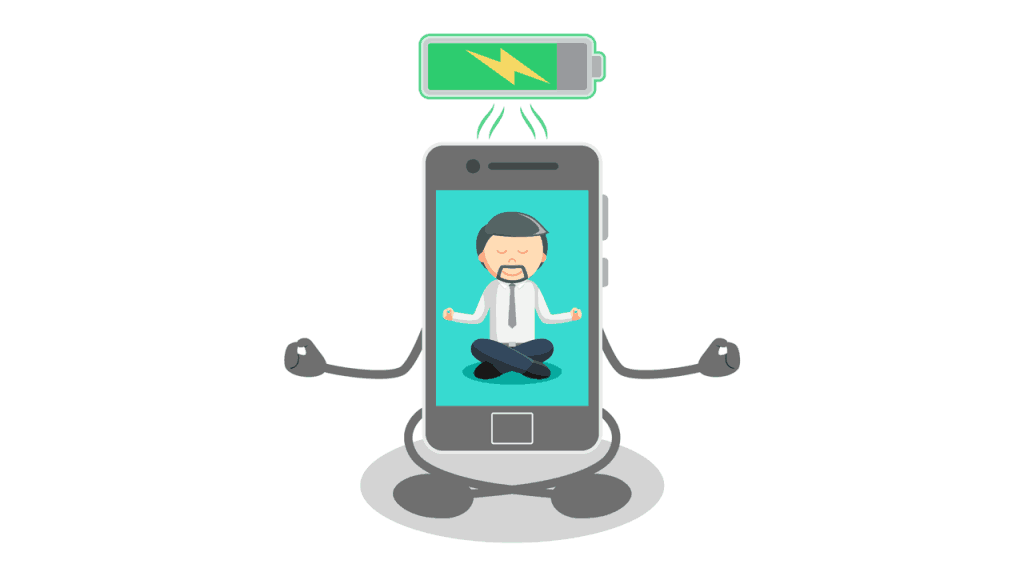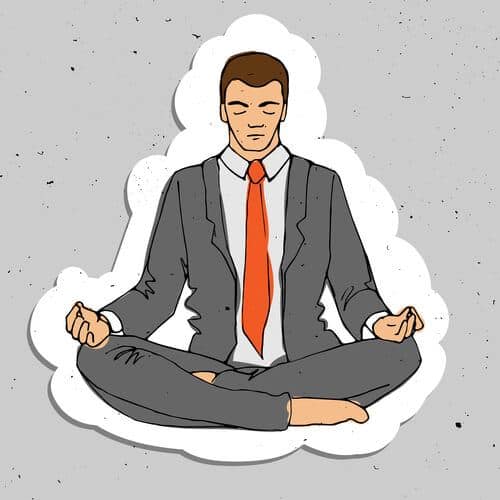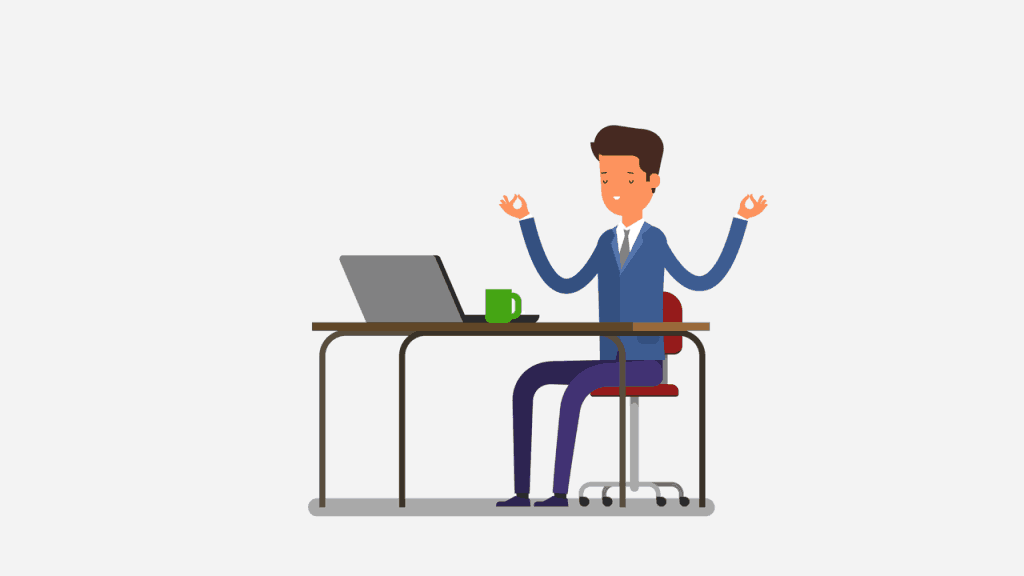Every day – often twice a day – for twenty minutes or so, I’ll sit still with my eyes closed with the sole intention of observing what’s happening to my breath, my body sensations, the thoughts in my mind, and my emotional state.
This is called meditation. It’s a daily reminder of how my mind works. People have done this for thousands of years and for a number of reasons.
I’ll tell you mine, but first I’ll tell you some of the reasons that don’t necessarily motivate me:
- I don’t meditate because I’m on a grand spiritual quest to understand the nature of reality and our place within it (although that’s a nice side effect sometimes) – and even if I was, I probably wouldn’t tell you because that just comes across as preachy.
- I don’t meditate because I think it makes me a better person than you – although it certainly makes me a better person than I might have been otherwise!
- I don’t meditate out of loyalty to an organization or particular spiritual path – I’ve explored a number of them in depth, but as I’ve written elsewhere, this is not a prerequisite for meditation, and you can see the benefits without engaging in spiritual or religious traditions.
So why do I do this? And why, in recent years, have I started teaching other people how to do it, too?
I’ve found three main benefits from my meditation practice as it has progressed. All of them are relevant to programming in some way.
Self-Awareness
I’ve developed greater self-awareness. My capacity to be aware of what’s happening in my mind and my body at any given moment has improved.
This is incredibly useful in a number of situations.
When I’m trying to focus on getting things done, I’m more aware of my inner obstacles (unhelpful thought patterns, emotional states that are holding me back, and so on).
When I’m interacting with others, I’m more aware of how my emotions are governing the interaction.
For example, if a conversation is being driven by fear or anger – which is often unhelpful – I’ll notice those emotions in myself more quickly than I used to. In general, I’ve also become a much better listener. Listening is an incredibly useful skill whenever I facilitate meetings (which is way too often).
Focus and Flow
Self-awareness means I notice when I become distracted, so I’m able to catch myself and redirect my thoughts and actions more towards working productively. My concentration is generally better, which serves as a foundation for entering flow states. Although my mind still wanders, I’m able to notice its wandering much more easily and return my attention to where I want it to be.
Emotional Regulation
Because I know what’s happening in my body, I’m more aware of my emotional state at any moment.
The major benefit is that I’m much more aware of when I’m becoming stressed or anxious, which means I can do something about it much sooner. Meditation often naturally triggers the relaxation response of our central nervous system, which reduces stress levels.
In fact, I’ve noticed my emotional reactivity – my tendency to get deeply caught up in strong emotional responses – has decreased with practice.
Types of Meditation
Humans have invented or discovered countless meditative practices. Some people theorize that the capacity to rest in simple awareness might actually have been an evolutionary advantage.
The capacity to sit with simple awareness for extended periods may have helped hunters on the lookout for prey, for example.
Broadly speaking there are three major categories of meditation:
- Attention
- Intention
- Visualization
Attention
This refers to a set of meditative practices where we explore our capacity to narrow or open our attention. For example, to pay attention to our breath, or become aware of body sensation.
Intention
In this family of practices, we deliberately set out to cultivate particular mental or emotional states during practice, such as compassion, gratitude, or inner peace.
Visualization
Closely related to intentional meditations, we use our “mind’s eye” to visualize situations that will have an effect on our mental state (typically relaxation), or outcomes we’d like to create.
Choosing a meditation practice can be a matter of personal taste. Finding something that suits you can take a while, so feel free to experiment.
I practice mindfulness meditation because I’m swayed by the fact that there’s a fair bit of research into its effectiveness. Many mindfulness practices fall into the “attention” category, although some of the most advanced practices use intention and visualization too.
How to Start Meditating
There are three main ways to begin meditation:
- DIY – having read about techniques, you just attempt to meditate yourself. This method is good to get started, although most people find that their practice benefits from a teacher at some point.
- Guided audio – you use a recording of a teacher’s voice who guides you through a meditation session. Search for Jon Kabat-Zinn on YouTube, check out The Guided Meditation Site, or head over to developermindfulness.com, and sign up for my newsletter to get a free guided audio meditation and eBook. Multiple apps that guide you through meditation are also available; Headspace is extremely popular and well reviewed.
- Group classes – in my opinion, this is the best way to learn. You attend classes or courses with experienced teachers and other meditators, either online or in person. Many people find that it’s easier to get into deeper meditative states when surrounded by others attempting to do the same. Sharing experiences of meditation also helps. Courses will provide you with background information about how the mind works that will help you understand your experience within meditation sessions.
When starting out, it’s more important to build a habit than to go for a particular duration. It’s much better to meditate for two or five minutes every day, rather than do a long session less regularly.
In general, I’ll meditate for 20 minutes in the morning, and usually (but not always) again in the afternoon. This represents around 1-2% of my time on the planet – I consider it time well invested!
Common Pitfalls When Starting Out
I address a number of pitfalls in the free eBook on my site. One of them is so common that I’ll raise it here: the “silent mind” fallacy.
Most beginners set out with the intention or expectation that your mind will go silent when you meditate.
It’s useful if you drop this expectation right now. It’s true that, with a bit of practice and the right attitude, you will experience a quieter mind, and even a very still mind.
But it’s almost guaranteed that if you “try” to empty the mind, you won’t.
Think of a snow globe that’s been shaken. If you want the snowflakes to settle back to the bottom, you don’t expend effort trying shake them to the bottom. You just sit and watch, and eventually they settle.
The same principle applies to the mind. If you try to force it to be still, it stays stirred up, but if you sit and watch for long enough, it tends to settle.
Meditation for a Well-Functioning Mind
It goes without saying that programming can be a mentally demanding career.
The mind is a pretty important device in this line of work – we make our living with our minds. Therefore, we need to take care of it if we want to ensure our success.
Programming demands that we switch between periods of intensely focused work, and opening up to the “big picture” of the project or organization that we’re working on/with. If we’re not careful, we can experience excessive stress, which has a negative effect on our ability to work effectively in the long run.
Learning techniques that help us focus and be calm as we work can make our jobs much easier and our output more creative.
Meditation for Skeptics
My dominant worldview is rational skepticism. Before I became a programmer, I studied physics and computational modeling at university.
I even worked as a hybrid developer/scientist for a number of years. Like most of you, my natural playground is in the world of logic, reason, and evidence.
I like to make this clear whenever I talk about meditation. It’s a word that has had several understandable but not always helpful connotations.
I’ve noticed a subtle transition in the way meditation is received by people in the time I’ve been
involved in it. I’ve had a longstanding interest in this topic, having practiced it for over a decade, and taught it for a number of years.
Science-type people can sometimes be skeptical about practices that are rooted in spiritual traditions. Equally, those with an established faith can be suspicions of practices that originate in another tradition.
Thankfully, that’s changing. Meditation has come down from the mountaintop and into the mainstream.
Advances in neuroscience combined with more rigorous scientific studies provide evidence of meditation’s effectiveness in a variety of contexts. Techniques from meditative practices have been integrated into modern psychology for healing, personal development, and optimizing performance.
This keeps the skeptical science part of me satisfied.
The infographic here contains a section that summarises the research into mindfulness meditation practices. Programmers will be interested to know that there is strong or very promising evidence that meditation:
- Improves concentration
- Reduces stress
- Alters the structure of your brain (!)
- Boosts immune functions
Regardless of your spiritual or scientific outlook, meditation can be of benefit and is worth exploring.
Happy meditating!




